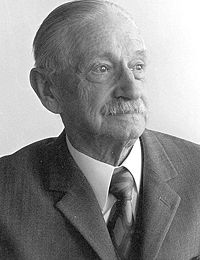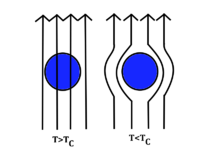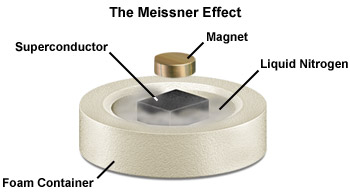Fritz Walther Meissner
created by dcho39
Walther Meissner was a German physicist known for his finding of a scientific phenomenon named after him: the Meissner effect.

Personal Life
Fritz Walther Meissner was born in Berlin, Germany on December 16, 1882 to Waldemar Meissner and Johanna Greger. He was educated at the Technical University of Berlin, studying physics and mechanical engineering; his supervisor was Max Planck. After, he attended the Physikalisch-Technische Bundesanstalt in Berlin. In 1926, he became chair in technical physics at the Technical University of Munich. He also later became the president of the Bavarian Academy of Sciences and Humanities. Sadly, Meissner lived lonely for the last few years until his death in 1974, with only his two dogs to accompany him.
Scientific Contributions
Meissner Effect
Aided by fellow German physicist Robert Ochsenfeld, Meissner discovered this scientific phenomenon in 1933. The Meissner effect is when a superconductor expels all magnetic fields from its interior during its transition to the superconducting state. This finding was actually done so indirectly. The two scientists were observing how the magnetic flux is conserved by a superconductor. They found that their sample of tin and lead were cooled below their critical, or superconducting transition, temperature when in the presence of an applied magnetic field. At this point, almost all interior magnetic fields were neutralized.

Explanation
The Meissner effect was given a phenomenological explanation by the brothers Fritz and Heinz London, who showed that the electromagnetic free energy in a superconductor is minimized provided
where H is the magnetic field and λ is the London penetration depth. It is also called the London equation.
It states the the magnetic field weakens substantially as you go from the surface to the interior of the superconductor.
This is due to the superconductor creating electric currents at the surface that will cancel the magnetic field. This effect continues for a very long time as the cancellation is not dependent on time, which leads the superconductor to be thought of as always expelling magnetic fields.
Application
By manipulating the characteristics of a superconductor, one could levitate objects.
Connectedness
- How is this topic connected to something that you are interested in?
Magnetic fields have always been interesting to me. Mostly though, I like the idea that levitation is possible. The possibility of levitating cars would be amazing and really astound me how far human technology has evolved. Unfortunately, we are not quite there yet!
- How is it connected to your major?
My major is Electrical Engineering, so working with magnetic fields and superconductors in the future is definitely not out of the picture. My career choice could lead me to working with superconductors and determining the various effects it has.
- Is there an interesting industrial application?
A larger scale of Meissner effect at work is demonstration of quantum levitation at Tel Aviv University in 2011. More can read about at http://www.gizmag.com/tel-aviv-university-quantum-levitation/20240/
History
Meissner's discovery of the Meissner effect led to Friz and Heinz London developing the theory of superconductivity. It explained the Meissner effect as well as how transport could have no resistance, and also paved the way for predictions of superconductivity to be produced.
See also
External links
References
https://en.wikipedia.org/wiki/Walther_Meissner
https://en.wikipedia.org/wiki/Meissner_effect
https://en.wikibooks.org/wiki/Quantum_Field_Theory/Introduction_to_The_Standard_Model
